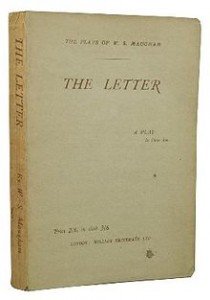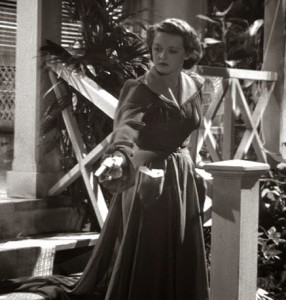Posted: August 13th, 2014 | No Comments »
Clearing out the other day I came across a box of books from my early childhood – so basically the late ’60s and early ’70s. In amongst the books was Bengo’s Friends. Bengo the Boxer was the subject of a series of kid’s books published in the 1960s. I do not recall ever having learnt to read from Bengo’s Friends but I suppose I must have at some point…those wondering how exactly I came to be interested in China (subconsciously I suppose) may like to take a look at the rather distinctly politically incorrect last of Bengo’s many friends…






Posted: August 12th, 2014 | No Comments »
I love it when I come across a Chinese related reason that provides an excuse to show an image by a favourite artist who I might not otherwise have got to show on this blog. And so with Mark Gertler (British painter, avowed Londoner, East End Jew) and his 1908 oil on canvas painting Still Life with Melon, which won him a bronze medal in a Board of Education National Competition. This was an early painting, while Gertler was working at the stained glass company Clayton and Bell after having attended art classes at the Regent Street Polytechnic (and about the time he began attending the Slade). Now Gertler had no particular interest in China, or Chinoiserie or anything Oriental as far as I know, but in Still Life with Melon a blue and white China plate appears.
Where these random objects came from seems to be lost to history. However, Gertler often painted at his mum’s house in Spitalifields so maybe she had Chinese tastes or these were just items about the Slade in 1908.


Posted: August 12th, 2014 | 1 Comment »








Posted: August 11th, 2014 | No Comments »
Quite by chance I recently came across a collection of essays, edited by Georgina Downey, entitled Domestic Interiors: Representing Homes from the Victorians to the Moderns. Contained within the collection is an enlightening essay by Brenda Martin called Verandas: Spaces Without Walls – the Veranda in Colonial Singapore. The essay is an interesting way to think of those verandas we’re all so familiar with in the literature and memoirs of the times (or even perhaps having had one yourself if you were lucky enough). The veranda as a public/private space, a place to demonstrate your social position, your adaptation to your foreign surroundings and your home culture. There’s a lot to consider in the humble veranda…..personally I like just standing on them watching a tropical rainstorm….
For me the veranda (just for the pedants – veranda is from the Portuguese varanda and the spelling with a h at the end is a variant according to the OED) in colonial Singapore and Malaya is always associated with Somerset Maugham – both Ethel Proudlock who left church in 1911 Kuala Lumpur, went home and shot her lover on her veranda (see Eric Lawlor’s excellent book on the case Murder on the Verandah) and Maugham’s novelization (or play to be precise) of the event, The Letter.

 The Letter – first edition
The Letter – first edition
 Bette Davis gets out on the veranda in The Letter (1940)
Bette Davis gets out on the veranda in The Letter (1940)
Posted: August 10th, 2014 | No Comments »
Helen Burnham’s Looking East, published by the Museum of Fine Arts in Boston, is a lovely addition to any Orientalists bookshelf….and with paper lanterns on the cover to0, and you know how China Rhyming loves a paper lantern!!
There was a craze for all things Japanese in the late-nineteenth and early twentieth centuries that brought a correspondingly radical shift in Western art, dubbed japonisme. Leading artists, including Vincent Van Gogh and Claude Monet, were inspired by Japanese art and culture to create works of singular beauty. This lavishly illustrated publication explores this extraordinary moment of cross-cultural exchange by presenting a selection of major paintings, prints, drawings, and decorative arts from the renowned collections of the Museum of Fine Arts, Boston. Masterpieces by European and American artists are shown along with rare objects, paintings, and prints from the Museums Japanese collection, which is one of the finest in the world. With its two introductory essays, emphasizing first Western and then Eastern perspectives, and its four thematically organized chapters, Looking East imparts the sense of discovery and excitement that characterized the development of japonisme in Europe and North America.
Posted: August 9th, 2014 | 3 Comments »
Amazingly Shanghai is still to be the site for the 2015 World Congress on Art Deco – this seems about as sensible a decision as making Afghanistan the site of the 2015 World Congress of Women’s Rights and Religious Tolerance. The more Shanghai destroys, the more it is rewarded – if the World Congress (whoever they are?) thought that awarding Shanghai a conference would save anything then it appears they are much mistaken. A sick joke perhaps? Now word reaches me that the lovely art-deco Metropole Hotel in Shanghai is about to get a “refurbishment”/”make over” – I think we can all agree that this will translate as a “trashing”. So, if you can – pop along and see the American Bar and lobby in its full art-nouveau glory before it’s refurbished out of existence. Shanghai’s original Metropole Hotel, built towards the end of the nineteenth century, was opposite the old race course on Bubbling Well Road (Nanjing Road West). That’s long gone and not a trace remains. The current Metropole was built on the junctions of Honan Road (Henan Road Middle) and Foochow Road (Fuzhou Road) in 1930 (the first picture below shows the building around the time of final completion) with the (still in existence) Hamilton House attached. There was also a Metropole Theatre not too far away on Thibet Road (Xizhang Road). The American Bar as you can see below is a key part of the lobby with the wonderful staircase – just what will survive the refurbishment will be seen but previous hotel make overs in Shanghai suggest not a lot. The American Bar was a hang out for many Americans, and others, in pre-war Shanghai – the American Club (on Foochow Road) as well as the American Chamber of Commerce (moved around but in Hamilton House for a long time), the American Court for China and the various administrative centres of the International Settlement were all close by.





Posted: August 6th, 2014 | 1 Comment »
I’m going to assume that most China Rhyming readers are aware, at least partially, of Julian Bell and his time in China in the 1930s. Born in 1908, the son of the artists Clive and Vanessa Bell (Virginia Woolf’s sister), after Cambridge Bell went to China in 1935 to teach English at Wuhan University. There of course he had a notorious affair that scandalised the college, led to his firing, and has since been novelised rather controversially by Hong Ying in her book K: The Art of Love (which I rather liked, but lots of people don’t and the heirs of Ling Shuhua certainly did not). However, the Bloomsbury Group/Crescent Moon Society crossovers are fascinating. After China Bell went as a volunteer ambulance driver to aid the Spanish Republic and was killed, after a just a month, at the Battle of Brunete, aged just 29.
But where did Bell’s interest in China come from? It’s often assumed it was a combination of the European depression, wanting to escape the claustrophobic confines of his parents’ reputations (and their rather tangled love affairs) and the Bloomsbury set, with a bit of Left wing odyssey, general curiosity and wanderlust thrown in. However, perhaps China, or an idea of China, was inculcated in Bell far earlier.
A recent visit to Charleston, the boyhood home of Bell in Sussex and the home of Vanessa Bell and Duncan Grant (and various others over the times they all loved there as the Bloomsbury Group in the country) offers a few clues. A major one is that the house is largely painted with murals and decals by Vanessa Bell and Duncan Grant. Bloomsbury of course liked it Chinoiserie, and Charleston has any number of blue and white plates, Chinese sculptures and Chinesey bits and bobs. More interestingly perhaps, on one door panel is painted a Chinese acrobat, by Duncan Grant. This idea would later be the subject of a more formal painting by the artist….See below first the door panel at Charleston and then the later drawing in pencil, watercolour and gouache on buff paper. Perhaps it was this Chinese acrobat Bell saw as a child every day on the door of the living room at Charleston that partly led to his trip to China in 1935?

 signed with initials ´DG´ (lower right) and inscribed ´Chinese Theatre Co.´ (lower left)
signed with initials ´DG´ (lower right) and inscribed ´Chinese Theatre Co.´ (lower left)
Posted: August 5th, 2014 | No Comments »
A couple of summer reads I thought regular China Rhyming viewers might find interesting….
Karolin Kan in That’s Shanghai on the (mis) fortunes of KMT Army vets from WW2 who live in the PRC, a land that can’t quite deal with who actually fought the Japanese….Soldiers of Misfortune…..;
The WSJ’s China Real Time blog has a Q&A with CASS Japan Specialist Ma Yong on the First Sino-Japanese War…Still Testy After 120 Years;
And, the Los Angeles Review of Books China blog has a review of the first four books published in the Penguin China World War One series….China’s Forgotten World War One
 The dedication of the WWI memorial on the Shanghai Bund, in 1924
The dedication of the WWI memorial on the Shanghai Bund, in 1924



























